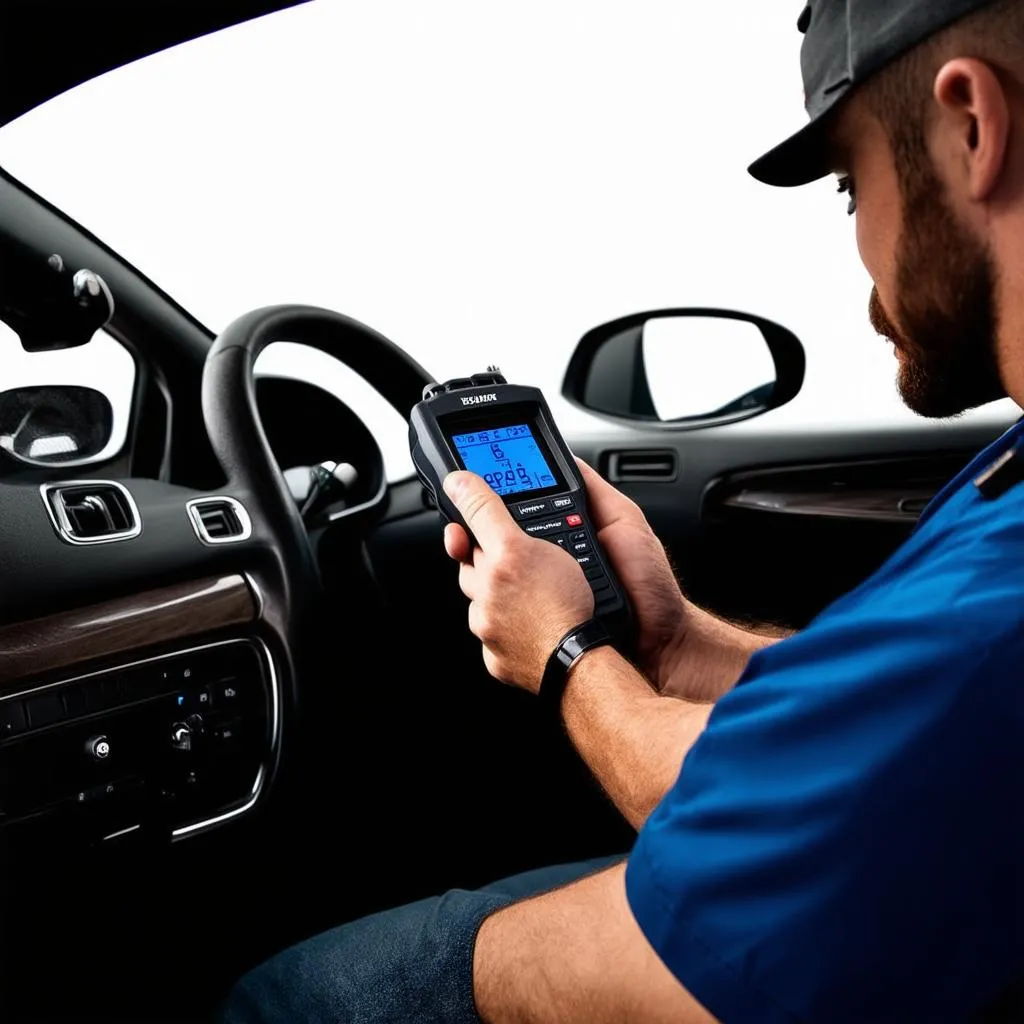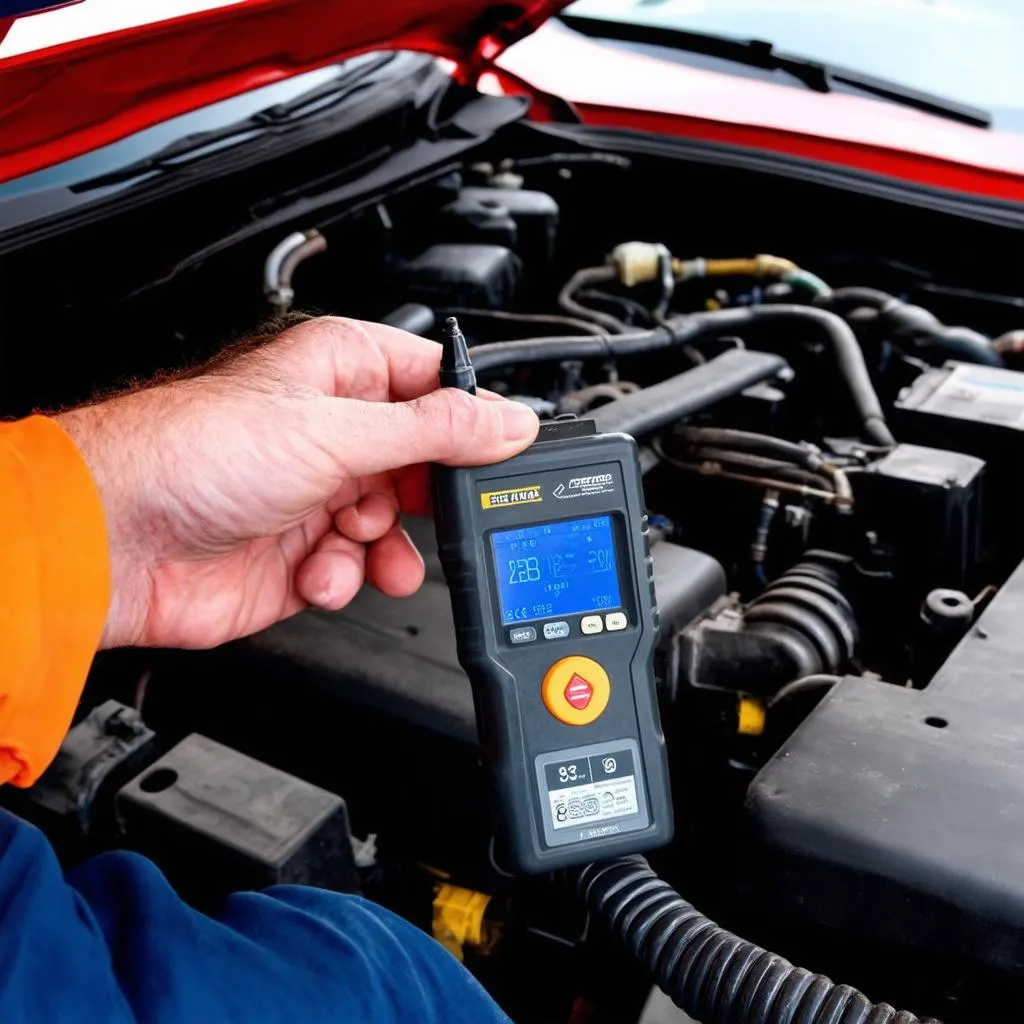Have you ever wondered how your car’s computer talks to your mechanic’s diagnostic tools? Well, it’s all thanks to a powerful communication protocol called CAN OBD2. It’s like a secret language that allows your car to share vital information with the outside world.
Understanding the CAN OBD2 Protocol: A Look Inside Your Car’s Nervous System
Imagine your car as a living, breathing organism. The CAN OBD2 protocol is like the nervous system that connects all the essential parts, allowing them to communicate and function seamlessly.
What is CAN OBD2?
CAN OBD2 stands for Controller Area Network On-Board Diagnostics 2. It’s a communication protocol that enables electronic control units (ECUs) in your car to exchange data with diagnostic tools.
Think of it as a network of mini-computers within your car, each responsible for a specific function, like engine management, transmission control, or ABS. CAN OBD2 allows these ECUs to share information, diagnose issues, and even control various aspects of your car’s performance.
Why is CAN OBD2 Important?
The CAN OBD2 protocol is essential for modern vehicle diagnostics. It allows mechanics to:
- Identify and diagnose problems: By accessing the data from various ECUs, mechanics can pinpoint the root cause of issues, ensuring faster and more accurate repairs.
- Monitor vehicle performance: CAN OBD2 provides real-time data on various parameters, allowing mechanics to monitor engine health, fuel efficiency, and other key metrics.
- Program and adjust settings: Some diagnostic tools allow mechanics to adjust or reprogram ECUs, optimizing vehicle performance or adapting it to specific needs.
How Does CAN OBD2 Work?
The CAN OBD2 protocol utilizes a two-wire system to transmit data between ECUs. It employs a unique identifier for each ECU, ensuring that data is transmitted accurately and efficiently.
- Data transmission: Information is encoded into specific messages called “frames” containing crucial data points, like engine speed, fuel pressure, or ABS status.
- Frame structure: Each frame includes a header, data, and a CRC (cyclic redundancy check) to ensure data integrity.
- Bus topology: The CAN OBD2 network uses a “bus topology,” meaning that all ECUs are connected to a common bus, allowing them to communicate with each other.
Advantages of Using CAN OBD2
- Improved diagnostics: CAN OBD2 enables more comprehensive and accurate diagnostics, leading to faster repair times.
- Enhanced performance: Access to real-time data allows mechanics to fine-tune vehicle settings, optimizing performance and efficiency.
- Reduced maintenance costs: By identifying potential problems early on, CAN OBD2 helps prevent major breakdowns, potentially saving you money in the long run.
Common Applications of CAN OBD2
- Diagnostic tools: Mechanics use CAN OBD2 compliant scanners to access ECU data, diagnose issues, and perform various repairs.
- Performance tuning: Enthusiasts utilize CAN OBD2 to modify engine parameters, enhancing performance and fuel efficiency.
- Data logging: Some drivers use CAN OBD2 to log vehicle performance data for analysis, helping them understand driving habits and improve fuel economy.
Frequently Asked Questions About CAN OBD2
Q: Can I use a CAN OBD2 scanner on any car?
A: Most modern vehicles (post-1996) are equipped with CAN OBD2 connectors, making them compatible with CAN OBD2 scanners. However, some older vehicles may require specific adapters or protocols.
Q: How do I connect a CAN OBD2 scanner to my car?
A: Most CAN OBD2 scanners connect to a 16-pin diagnostic connector located under the dashboard. Look for a port labeled “OBDII,” “OBD2,” or “DLC.”
Q: Can I use CAN OBD2 to modify my car’s performance?
A: Yes, CAN OBD2 can be used for performance tuning, but it requires knowledge and caution. Modifying ECU settings can affect vehicle performance, fuel economy, and even emissions.
Q: Can I use a CAN OBD2 scanner to reset my car’s check engine light?
A: You can use a CAN OBD2 scanner to read and clear diagnostic trouble codes (DTCs), which often illuminate the check engine light. However, it’s important to address the underlying issue that caused the code in the first place.
The Importance of a Skilled Mechanic
While understanding the basic concepts of CAN OBD2 is helpful, it’s crucial to consult a skilled mechanic for any complex repairs or modifications. They can use their expertise to accurately diagnose issues, perform necessary repairs, and ensure the safety and reliability of your vehicle.
As stated by automotive expert Dr. David Thompson in his book “Automotive Diagnostics: A Practical Guide,” “CAN OBD2 technology has revolutionized the way we diagnose and repair vehicles, but it also requires skilled technicians to properly interpret and utilize the data it provides.”
 CAN OBD2 Scanner
CAN OBD2 Scanner
Exploring Further
- What is OBD-II? If you’re curious about the broader context of On-Board Diagnostics, we have an article on CAN U Install OBD System On Old Cars? that covers the evolution of OBD systems.
- Is your car compatible with CAN OBD2? Visit our website for a comprehensive list of Dealer Scanner For European Cars to see if your vehicle is supported.
Call to Action
Need help with your car’s diagnostic system? Our team of experienced automotive technicians is available 24/7 to provide expert support. Contact us on WhatsApp: +84767531508 for assistance with diagnostics, software installation, and any questions you may have.
 CAN OBD2 Diagnostic Tool
CAN OBD2 Diagnostic Tool
Conclusion
CAN OBD2 is a powerful communication protocol that plays a vital role in modern automotive diagnostics. By understanding its basics and partnering with skilled mechanics, you can ensure your vehicle remains reliable and performs at its best. Remember, your car’s health is essential, and understanding CAN OBD2 empowers you to make informed decisions about its care.